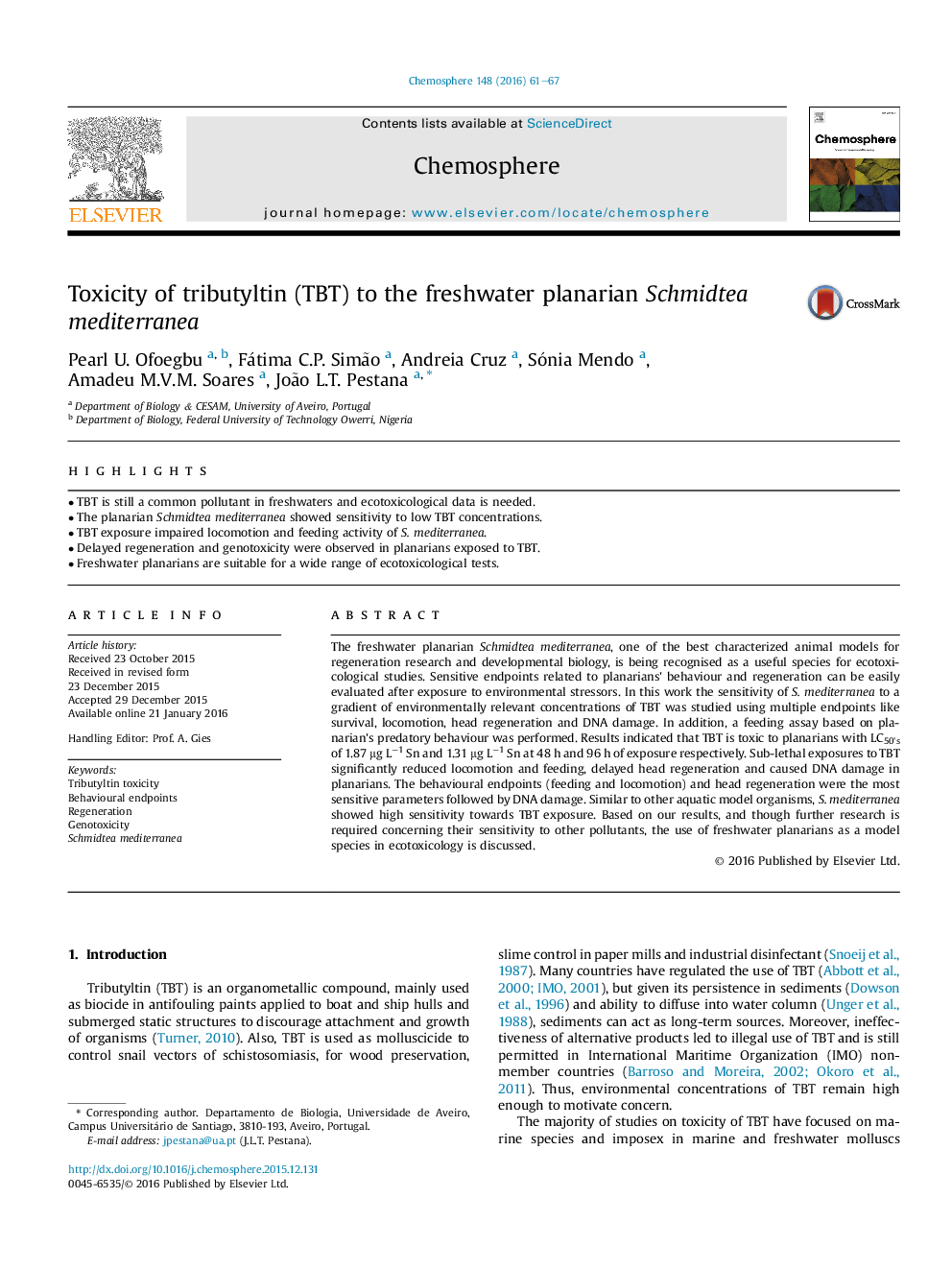| Article ID | Journal | Published Year | Pages | File Type |
|---|---|---|---|---|
| 4407837 | Chemosphere | 2016 | 7 Pages |
•TBT is still a common pollutant in freshwaters and ecotoxicological data is needed.•The planarian Schmidtea mediterranea showed sensitivity to low TBT concentrations.•TBT exposure impaired locomotion and feeding activity of S. mediterranea.•Delayed regeneration and genotoxicity were observed in planarians exposed to TBT.•Freshwater planarians are suitable for a wide range of ecotoxicological tests.
The freshwater planarian Schmidtea mediterranea, one of the best characterized animal models for regeneration research and developmental biology, is being recognised as a useful species for ecotoxicological studies. Sensitive endpoints related to planarians' behaviour and regeneration can be easily evaluated after exposure to environmental stressors. In this work the sensitivity of S. mediterranea to a gradient of environmentally relevant concentrations of TBT was studied using multiple endpoints like survival, locomotion, head regeneration and DNA damage. In addition, a feeding assay based on planarian's predatory behaviour was performed. Results indicated that TBT is toxic to planarians with LC50's of 1.87 μg L−1 Sn and 1.31 μg L−1 Sn at 48 h and 96 h of exposure respectively. Sub-lethal exposures to TBT significantly reduced locomotion and feeding, delayed head regeneration and caused DNA damage in planarians. The behavioural endpoints (feeding and locomotion) and head regeneration were the most sensitive parameters followed by DNA damage. Similar to other aquatic model organisms, S. mediterranea showed high sensitivity towards TBT exposure. Based on our results, and though further research is required concerning their sensitivity to other pollutants, the use of freshwater planarians as a model species in ecotoxicology is discussed.
